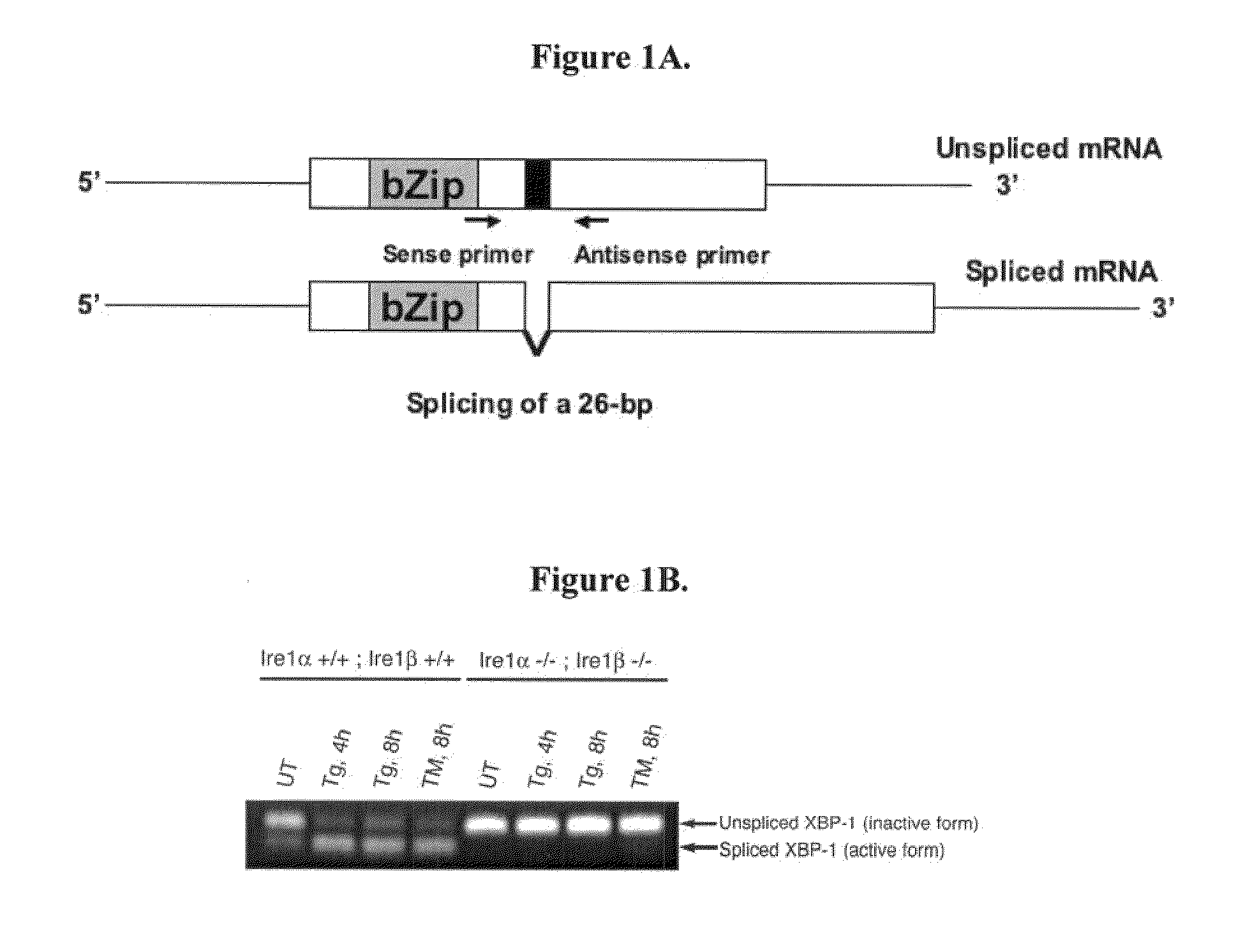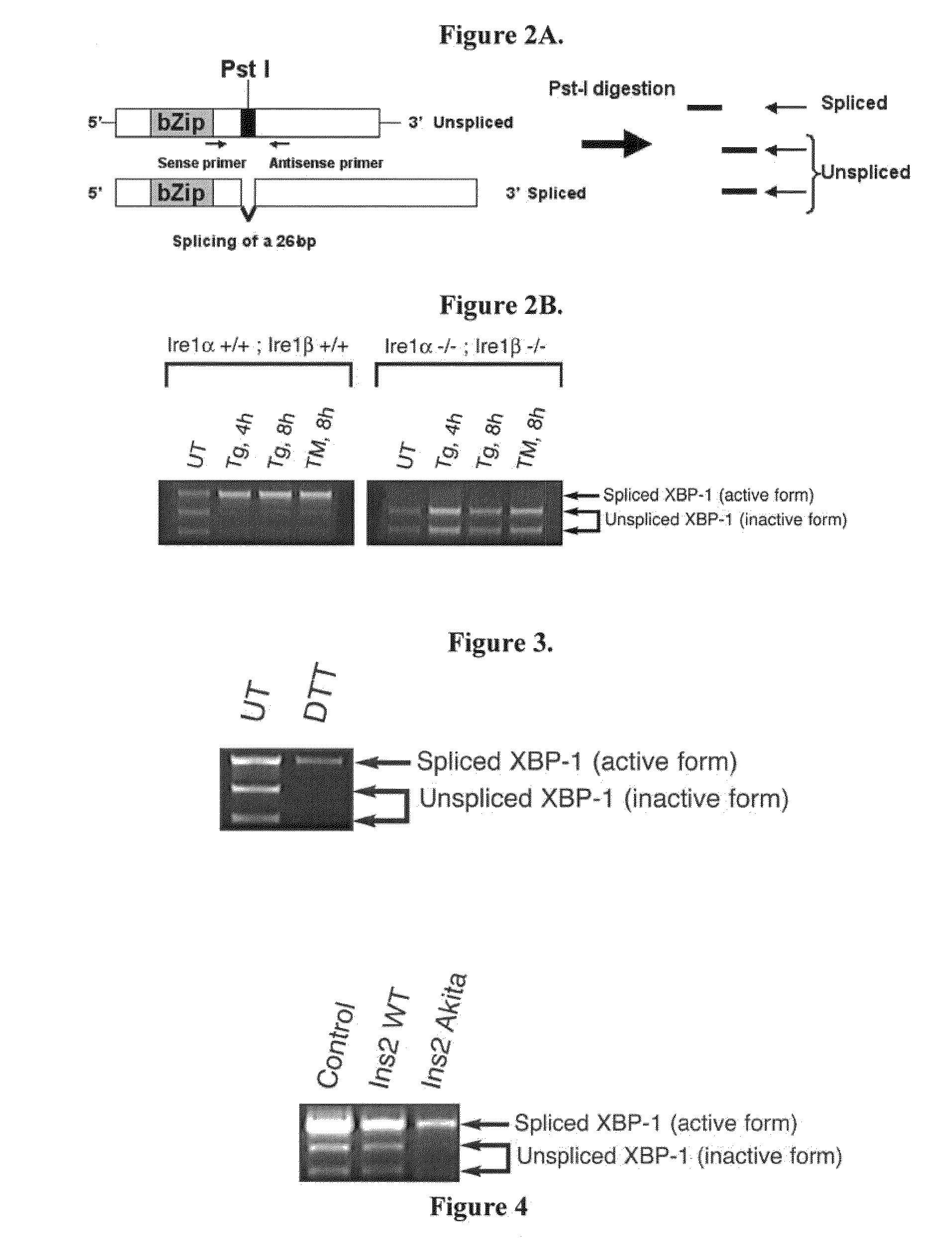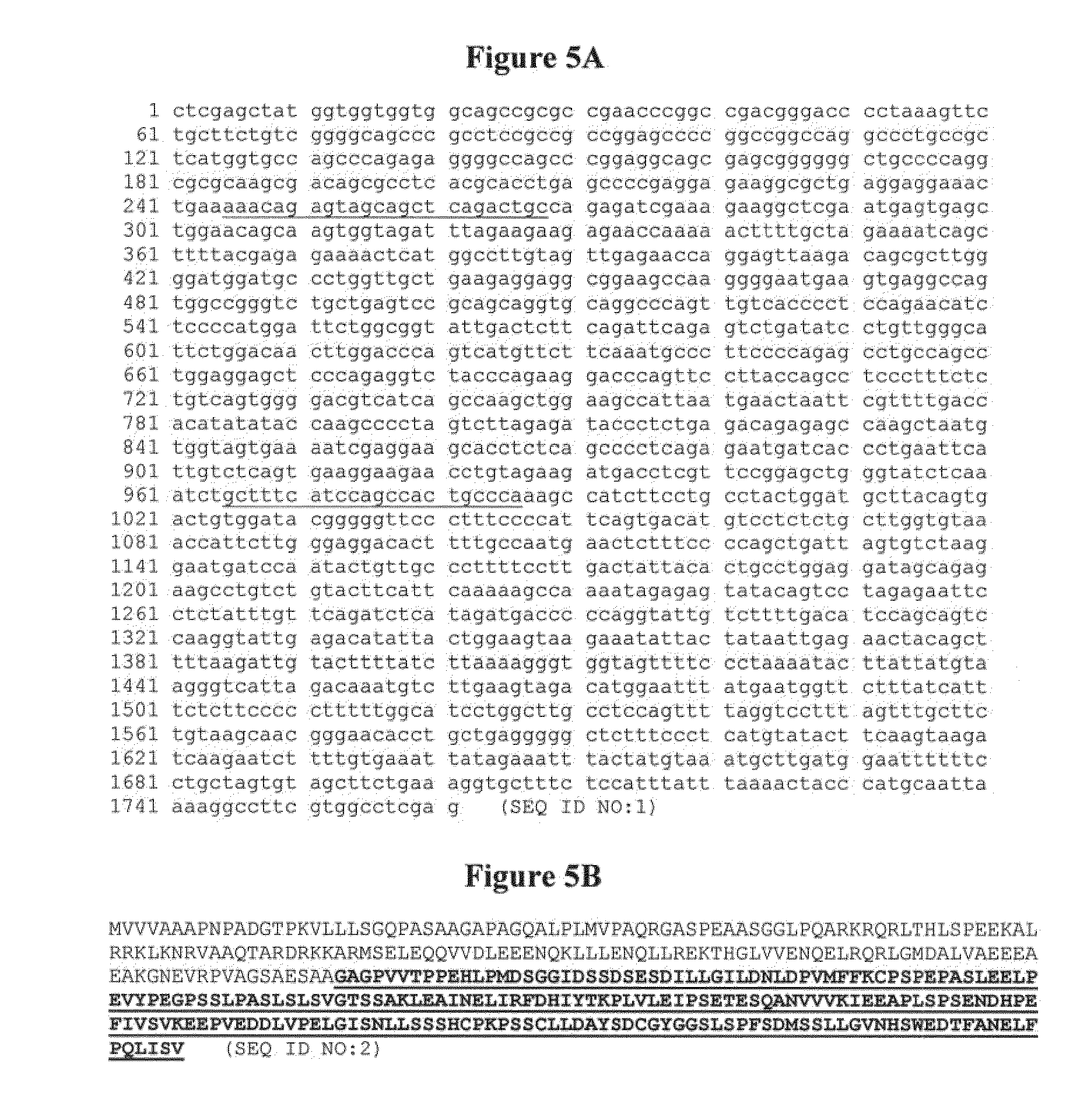Methods for Diagnosing and Treating Endoplasmic Reticulum (ER) Stress Diseases
a technology of endoplasmic reticulum and stress disease, which is applied in the field of methods for diagnosing and treating endoplasmic reticulum stress diseases, can solve the problems of difficult direct measurement of activity, small shift, and difficult detection, and achieve the effect of increasing er stress levels
- Summary
- Abstract
- Description
- Claims
- Application Information
AI Technical Summary
Benefits of technology
Problems solved by technology
Method used
Image
Examples
example 1
XBP-1 Splicing Assay
[0164]RNA from cells was reverse transcribed using Oligo-dT primer. PCR is performed using primers shown in Table 2.
TABLE 2RT-PCT primersSEQSense (S) orIDSpeciesAnitsense (AS)SequenceNO:HumanhXBP-1.1SAAACAGAGTAGCAGCTCAGACTGC8HumanhXBP-1.2ASTGGGCAGTGGCTGGATGAAAGC9MousemXBP-1.3SAAACAGAGTAGCAGCGCAGACTGC10MousemXBP-1.6ASCAGACAATGGCTGGATGAAAGC11RatrXBP-1.3SAAACAGAGTAGCAGCACAGACTGC12RatmXBP-1.6ASCAGACAATGGCTGGATGAAAGC11
[0165]These primers amplify a 768-base pair PCR product for human, a 774-base pair PCR product for mouse, and a 774-base pair PCR product for rat from the unspliced XBP-1, and 742-base pair (human) and 748-base pair (mouse, rat) PCR products from the spliced form. These primers were designed to amplify the region encompassing the splice junction of XBP-1 mRNA.
[0166]Reverse Transcriptase-PCR(RT-PCR) was performed using mRNA isolated using standard methods from a wild-type mouse fibroblast cell line and Ire1α:Ire1β double knock-out cell line. The cells wer...
example 2
XBP-1 Splicing Assay with Pst I Digestion
[0168]A Pst I restriction site is removed by IRE1-mediated cleavage and splicing of the mRNA, thus, the results of the experiment described in Example 1 can also be achieved using an intermediate step of Pst I cleavage to facilitate distinguishing between spliced and unspliced XBP-1. Pst I digestion of the spliced form of XBP-1 yields a 768-base pair fragment for human, 774-base pair fragment for mouse and rat. The unspliced forms of XBP-1 yield 285 base pair and 483 base pair fragments for human, 291 base pair and 483 base pair fragments for mouse and rat.
[0169]RT-PCR performed as described in Example 1 was followed by Pst I digestion, and the digested products were visualized on a 2% agarose gel. Since the intron removed by IRE1-mediated splicing contains the Pst I site, the spliced form (the active form) of XBP-1 mRNA (cDNA) loses its Pst I site after IRE1 processing. Pst I digestion of RT-PCR product produces undigested larger fragment co...
example 3
ER Stress Signaling is Activated in Islet Cells under Physiological Conditions
[0170]To determine whether ER stress signaling is activated in islet cells under physiological conditions, XBP-1 splicing was monitored in freshly isolated mouse islet cells, using the methods described above in Example 2. The results are shown in FIG. 3. High levels of XBP-1 mRNA splicing were detected in the islet cells. Dithiothreitol (DTT) treatment enhanced the XBP-1 splicing. It is known that DTT blocks disulfide bond formation experimentally, resulting in ER stress. These results illustrate that XBP-1 splicing, and hence ER stress, occurs in islet cells under physiological conditions. This demonstrates that the methods described herein can be successfully used to detect and measure ER stress under physiological conditions; in addition, as the islet cells secrete insulin, this demonstrates that ER stress may play a role in the etiology of diabetes.
PUM
| Property | Measurement | Unit |
|---|---|---|
| molecular weight | aaaaa | aaaaa |
| temperature | aaaaa | aaaaa |
| pH | aaaaa | aaaaa |
Abstract
Description
Claims
Application Information
 Login to View More
Login to View More - R&D
- Intellectual Property
- Life Sciences
- Materials
- Tech Scout
- Unparalleled Data Quality
- Higher Quality Content
- 60% Fewer Hallucinations
Browse by: Latest US Patents, China's latest patents, Technical Efficacy Thesaurus, Application Domain, Technology Topic, Popular Technical Reports.
© 2025 PatSnap. All rights reserved.Legal|Privacy policy|Modern Slavery Act Transparency Statement|Sitemap|About US| Contact US: help@patsnap.com



